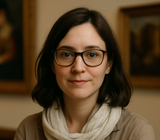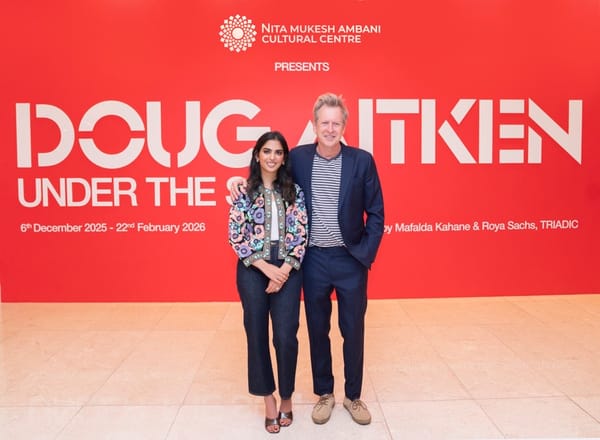Visual Literacy in a Globalised World: Learning to See Critically
In a globalised world shaped by images, visual literacy is no longer optional. It empowers us to interpret, question, and create meaning across cultures, turning seeing into an act of understanding, empathy, and responsibility.

In today’s image-saturated culture, the ability to “read” visuals is no longer an optional skill; it is essential. From advertising campaigns and political memes to museum installations and social media reels, images have become the universal language of our age. Yet, while we live surrounded by visual stimuli, few of us are truly visually literate. In a globalised world where images travel faster than words, visual literacy—the ability to interpret, analyse, and create meaning from visual information—is a fundamental aspect of contemporary education, communication, and cultural understanding.
What Is Visual Literacy?
The term visual literacy was first coined in the late 1960s by John Debes, who defined it as the ability to understand and use images in ways that are both purposeful and informed. It involves decoding the meanings embedded within images and also creating visuals that communicate effectively. In the same way that textual literacy requires understanding grammar, syntax, and tone, visual literacy requires an understanding of composition, colour, symbolism, and context.
To be visually literate is to see beyond the surface. A photograph is not just a picture; it is a construct shaped by the photographer’s choices, the viewer’s perception, and the surrounding culture. The visually literate individual understands that images are never neutral; they are arguments, stories, or ideologies disguised as visuals.
The Global Circulation of Images
Globalisation has intensified the power and reach of images. Platforms such as Instagram, TikTok, and YouTube have made visual communication instantaneous and borderless. A protest photograph taken in Tehran, a fashion editorial shot in Paris, or a mural painted in Mexico City can be viewed within seconds across continents. This circulation has made the image one of the most influential agents of cultural exchange today.
However, this global flow of images also brings complexities. An image produced in one cultural context can be interpreted very differently in another. What signifies empowerment in one culture might suggest rebellion or disrespect in another. Visual literacy thus becomes an ethical practice, a way to navigate cultural nuances, question stereotypes, and resist manipulation.
For example, consider how international advertising often borrows visual tropes from different cultures. A global fashion brand may incorporate Indian motifs or African textiles into its campaigns, often without acknowledging their origins. A visually literate viewer recognises these dynamics, understanding how imagery can both celebrate and exploit cultural difference.
Visual Literacy and the Politics of Perception
Images do not just reflect the world; they shape how we see it. They construct hierarchies of beauty, success, and morality. This is why visual literacy is deeply political. It teaches us to question whose perspectives dominate our visual landscape and whose stories are omitted.
Take, for instance, the visual narratives surrounding migration. In Western media, photographs of migrants are often reduced to scenes of despair: crowded boats, barbed wire, or desperate faces. Such imagery evokes sympathy but also reinforces stereotypes of helplessness. A visually literate audience recognises this imbalance and asks: Who took this photograph? For whom was it intended? What emotions does it seek to produce? What realities does it conceal?
Similarly, in art history, the canon has long been dominated by Western perspectives. The decolonisation of art education, one of the most significant movements of the past decade, demands new visual literacies: the ability to see beyond the Eurocentric frame and appreciate how artists across Asia, Africa, and Latin America have contributed to global modernism. Visual literacy, in this context, becomes a way of correcting vision itself.
Education for the Image Age
Despite its importance, visual literacy has often been neglected in formal education systems, which tend to prioritise linguistic and numerical skills. Yet in an era where students consume more images than text, this imbalance is increasingly untenable. Teaching visual literacy means teaching students to slow down their seeing, to observe, interpret, and question before they react.
Art education naturally provides a fertile ground for developing visual literacy. Analysing paintings, photographs, or films encourages critical observation and interpretation. But visual literacy also belongs in other disciplines. In history classes, students might study propaganda posters to understand how visual design manipulates emotion. In science, data visualisation can be explored not only for accuracy but for aesthetics and clarity. In media studies, the architecture of the Instagram feed itself can become a subject of analysis. Why do certain images trend, and what algorithms govern visibility?
The key is to shift from passive consumption to active engagement. A visually literate student not only decodes meaning but learns to create it, using visuals responsibly and persuasively to communicate their own ideas.
Visual Literacy and Technology
Technology has democratised image-making, but it has also blurred the boundaries between reality and fiction. Artificial intelligence, digital editing, and deepfakes challenge our ability to trust what we see. In this context, visual literacy becomes not just an aesthetic skill but a civic one.
A digitally literate viewer today must be able to discern authenticity, detect manipulation, and understand how algorithms shape their visual environment. For instance, AI-generated imagery can reinforce biases embedded in data sets, depicting professionals as predominantly male or associating certain facial features with criminality. Without visual literacy, viewers may unwittingly accept such representations as truth.
At the same time, technology also opens creative possibilities. Artists are using AI, augmented reality, and digital collage to critique visual culture itself. By making visible the processes of manipulation, they invite audiences to question how images are constructed. In doing so, they advance visual literacy as a form of critical awareness.
The Role of Museums and Galleries
Cultural institutions play a crucial role in fostering visual literacy. Museums are not just repositories of art; they are spaces of visual education. Through curatorial framing, wall texts, and guided tours, they shape how we interpret images. Increasingly, museums around the world are rethinking their roles, moving from temples of aesthetic contemplation to forums for visual dialogue.
For example, exhibitions that juxtapose artworks from different regions encourage viewers to make cross-cultural connections, revealing how visual ideas migrate and transform. Participatory installations invite visitors to become part of the visual narrative, turning spectatorship into experience. In these ways, museums are becoming laboratories of seeing, training the public to engage with images critically and empathetically.
Globalisation and the Hybrid Image
As globalisation accelerates, visual culture itself becomes hybrid. Contemporary artists frequently combine local traditions with global media. The result is a visual language that resists singular interpretation, a fusion of histories, materials, and sensibilities. Indian artist Jitish Kallat, for instance, merges mythological motifs with urban imagery to comment on modern India’s contradictions. Similarly, Ghanaian artist El Anatsui transforms discarded bottle caps into monumental tapestries, turning waste into beauty and reasserting the value of local craftsmanship within global art circuits.
These artists exemplify the new kind of visual literacy required today: one that understands the interplay of the global and the local, the traditional and the technological, the aesthetic and the ethical. Their works speak across cultures precisely because they challenge viewers to look deeper.
Seeing as a Global Citizen
Ultimately, visual literacy in a globalised world is about more than decoding symbols or recognising references. It is about cultivating empathy through seeing, understanding that every image carries a point of view, and that to see responsibly is to acknowledge the diversity of visions that shape our world.
To be visually literate is to resist passivity. It is to question what we see on our screens, to celebrate the multiplicity of visual expression, and to be aware of how our gaze contributes to global narratives. In this sense, visual literacy is not merely a skill but a moral stance: an awareness that seeing is never innocent, and that every act of looking connects us to a larger web of meanings and responsibilities.
In a world increasingly mediated by images, visual literacy equips us not only to interpret culture but to participate in it consciously, critically, and creatively. For educators, artists, and audiences alike, this is the challenge and the opportunity of our visual century: to learn not just how to see, but how to see well.





